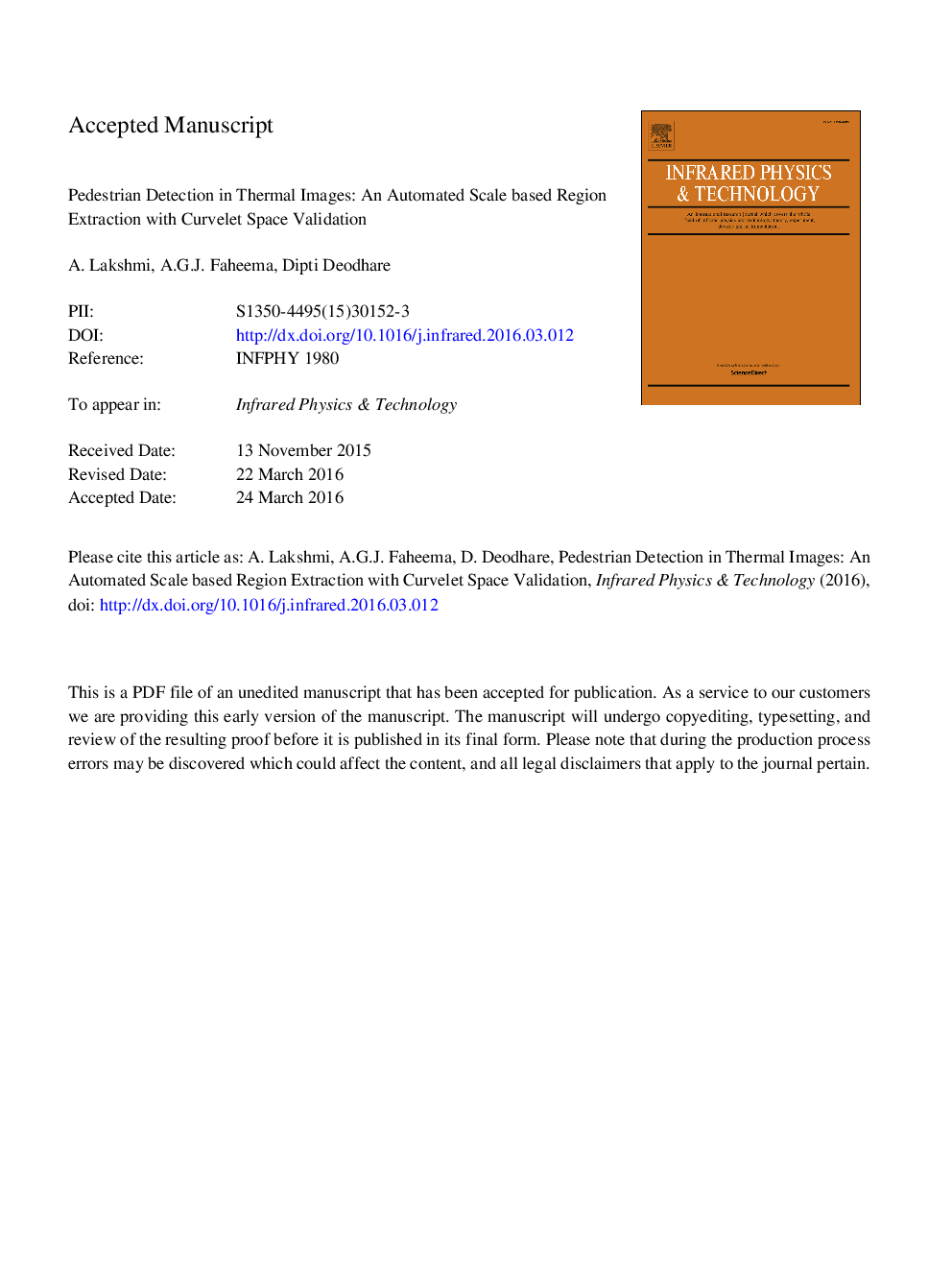| کد مقاله | کد نشریه | سال انتشار | مقاله انگلیسی | نسخه تمام متن |
|---|---|---|---|---|
| 8146455 | 1524110 | 2016 | 20 صفحه PDF | دانلود رایگان |
عنوان انگلیسی مقاله ISI
Pedestrian detection in thermal images: An automated scale based region extraction with curvelet space validation
ترجمه فارسی عنوان
تشخیص عابران پیاده در تصاویر حرارتی: استخراج منطقه ای مبتنی بر خودکار با اعتبار سنجی فضای خالص
دانلود مقاله + سفارش ترجمه
دانلود مقاله ISI انگلیسی
رایگان برای ایرانیان
کلمات کلیدی
موضوعات مرتبط
مهندسی و علوم پایه
فیزیک و نجوم
فیزیک اتمی و مولکولی و اپتیک
چکیده انگلیسی
Pedestrian detection is a key problem in night vision processing with a dozen of applications that will positively impact the performance of autonomous systems. Despite significant progress, our study shows that performance of state-of-the-art thermal image pedestrian detectors still has much room for improvement. The purpose of this paper is to overcome the challenge faced by the thermal image pedestrian detectors, which employ intensity based Region Of Interest (ROI) extraction followed by feature based validation. The most striking disadvantage faced by the first module, ROI extraction, is the failed detection of cloth insulted parts. To overcome this setback, this paper employs an algorithm and a principle of region growing pursuit tuned to the scale of the pedestrian. The statistics subtended by the pedestrian drastically vary with the scale and deviation from normality approach facilitates scale detection. Further, the paper offers an adaptive mathematical threshold to resolve the problem of subtracting the background while extracting cloth insulated parts as well. The inherent false positives of the ROI extraction module are limited by the choice of good features in pedestrian validation step. One such feature is curvelet feature, which has found its use extensively in optical images, but has as yet no reported results in thermal images. This has been used to arrive at a pedestrian detector with a reduced false positive rate. This work is the first venture made to scrutinize the utility of curvelet for characterizing pedestrians in thermal images. Attempt has also been made to improve the speed of curvelet transform computation. The classification task is realized through the use of the well known methodology of Support Vector Machines (SVMs). The proposed method is substantiated with qualified evaluation methodologies that permits us to carry out probing and informative comparisons across state-of-the-art features, including deep learning methods, with six standard and in-house databases. With reference to deep learning, our algorithm exhibits comparable performance. More important is that it has significant lower requirements in terms of compute power and memory, thus making it more relevant for depolyment in resource constrained platforms with significant size, weight and power constraints.
ناشر
Database: Elsevier - ScienceDirect (ساینس دایرکت)
Journal: Infrared Physics & Technology - Volume 76, May 2016, Pages 421-438
Journal: Infrared Physics & Technology - Volume 76, May 2016, Pages 421-438
نویسندگان
A. Lakshmi, A.G.J. Faheema, Dipti Deodhare,
